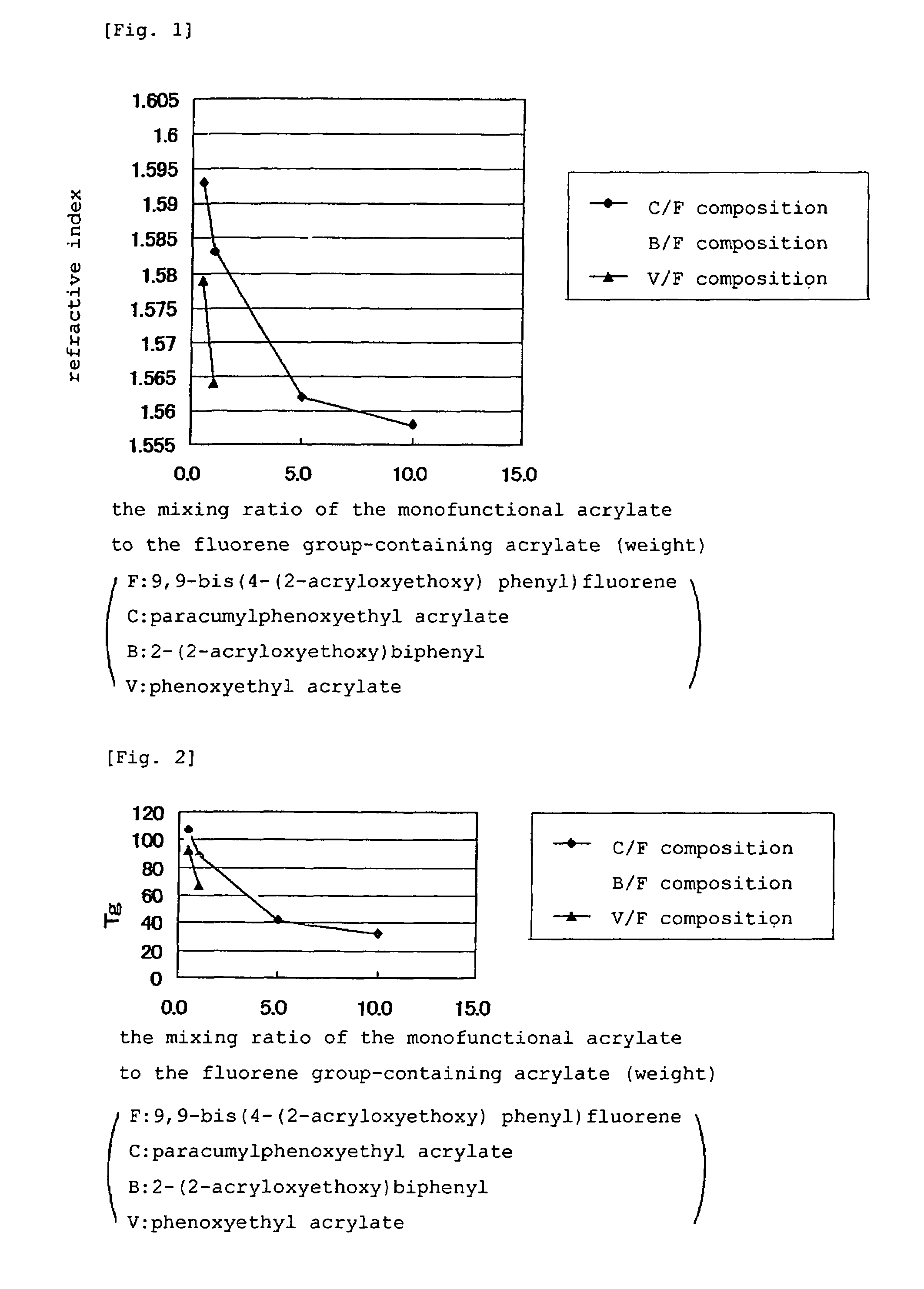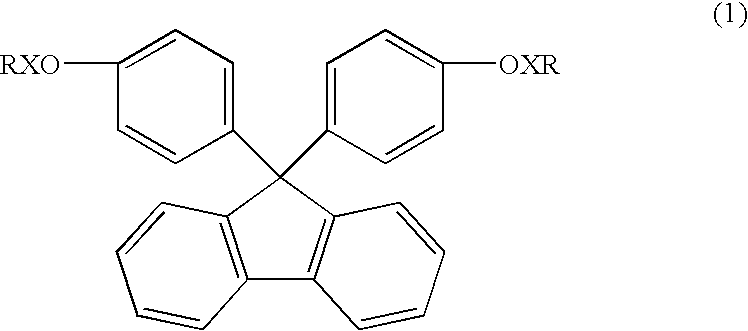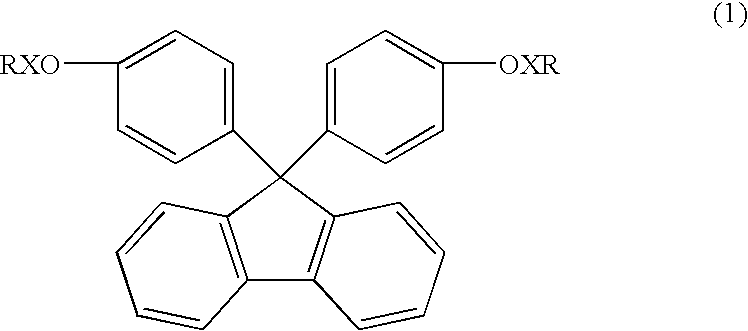Curable resin composition
a technology of resin composition and resin coating, applied in printing and other directions, to achieve the effect of maintaining the transparency of the cured product, improving the light extraction efficiency of the sapphire substrate of leds, and excellent heat resistan
- Summary
- Abstract
- Description
- Claims
- Application Information
AI Technical Summary
Benefits of technology
Problems solved by technology
Method used
Image
Examples
example 1
(1) Preparation of the Resin Composition
[0058]80 parts by weight of 9,9-bis(4-(2-acryloxyethoxy)phenyl)fluorene (Osaka Gas Chemicals Co., Ltd., product name: BPEF-A) was mixed with 20 parts by weight of paracumylphenoxyethyl acrylate (TOAGOSEI CO., LTD., product name: ARONIX M110), and the mixture was uniformly stirred at 60° C. and then cooled to 40° C. Subsequently, 1 part by weight of a curing agent (product of NOF CORPORATION, PERHEXA O) was added and uniformly dispersed by means of a planetary mixer, whereby a resin composition was obtained.
(2) Production of Cured Product Sheet
[0059]The resin composition obtained in (1) was sandwiched between two mold-releasing films composed of PET. After the thickness of the resin composition was adjusted, the resin composition was then heat-treated in an oven at 80° C. for 1 hour in order to cure it. Subsequently, the resin composition was cooled to room temperature, and the mold-releasing films were then removed, whereby a sheet of the cure...
examples 2 to 6
[0072]The same procedure as in Example 1 was repeated except that the amounts of 9,9-bis(4-(2-acryloxyethoxy)phenyl)fluorene and paracumylphenoxyethyl acrylate were changed as listed in Table 1 and that Irgacure I-651 (Ciba Specialty Chemicals) was used as the curing agent, to thereby prepare resin compositions. In addition to this, each of the obtained resin compositions was irradiated with light from a halogen lamp with a total light dose of 1 J / cm2 in order to cure it, whereby a sheet of the cured product was produced. Then, the sheet of cured product was evaluated. The results are shown in Table 1.
examples 7 to 11
[0073]The same procedure as in Example 2 was repeated except that 2-(2-acryloxyethoxy)biphenyl (product of TOAGOSEI CO., LTD., product name: T01463) was used in an amount listed in Table 1 in place of paracumylphenoxyethyl acrylate, to thereby prepare resin compositions. Then, a sheet of the cured product of each of the obtained resin compositions was produced and was evaluated. The results are shown in Table 1.
PUM
| Property | Measurement | Unit |
|---|---|---|
| refractive index | aaaaa | aaaaa |
| refractive index | aaaaa | aaaaa |
| glass transition point | aaaaa | aaaaa |
Abstract
Description
Claims
Application Information
 Login to View More
Login to View More - R&D
- Intellectual Property
- Life Sciences
- Materials
- Tech Scout
- Unparalleled Data Quality
- Higher Quality Content
- 60% Fewer Hallucinations
Browse by: Latest US Patents, China's latest patents, Technical Efficacy Thesaurus, Application Domain, Technology Topic, Popular Technical Reports.
© 2025 PatSnap. All rights reserved.Legal|Privacy policy|Modern Slavery Act Transparency Statement|Sitemap|About US| Contact US: help@patsnap.com



